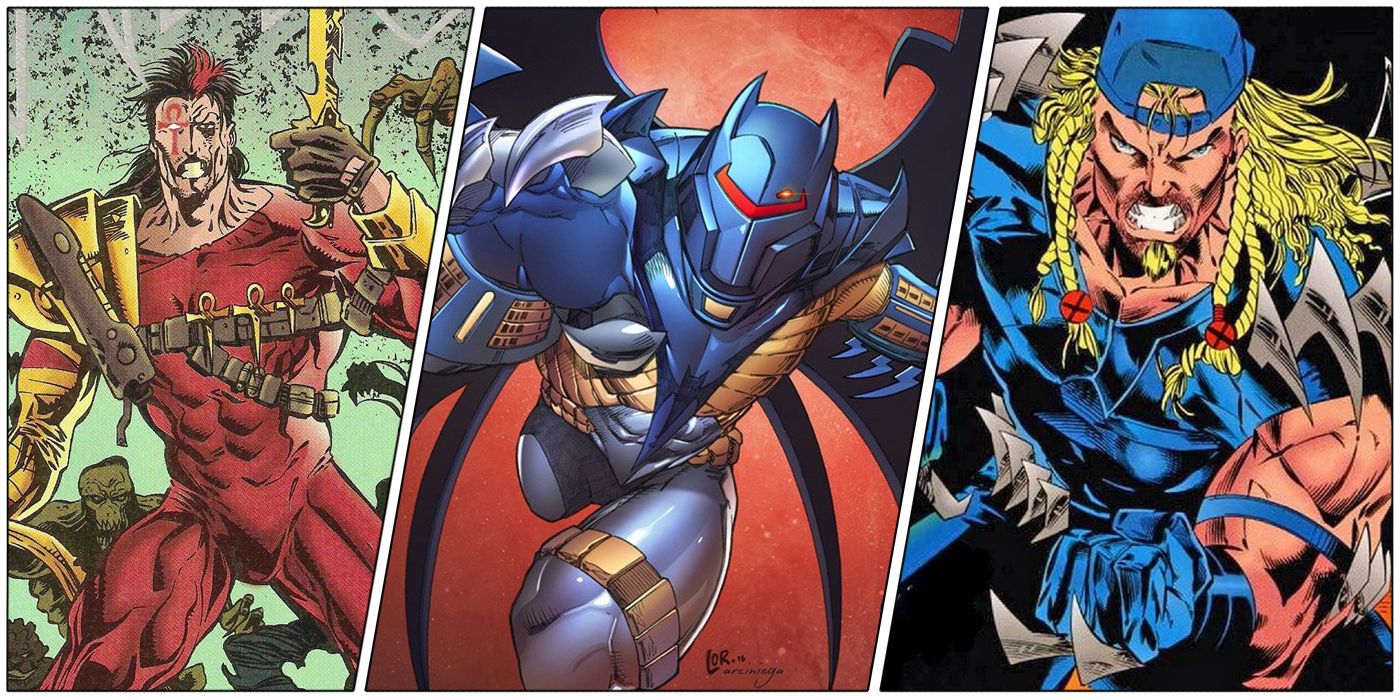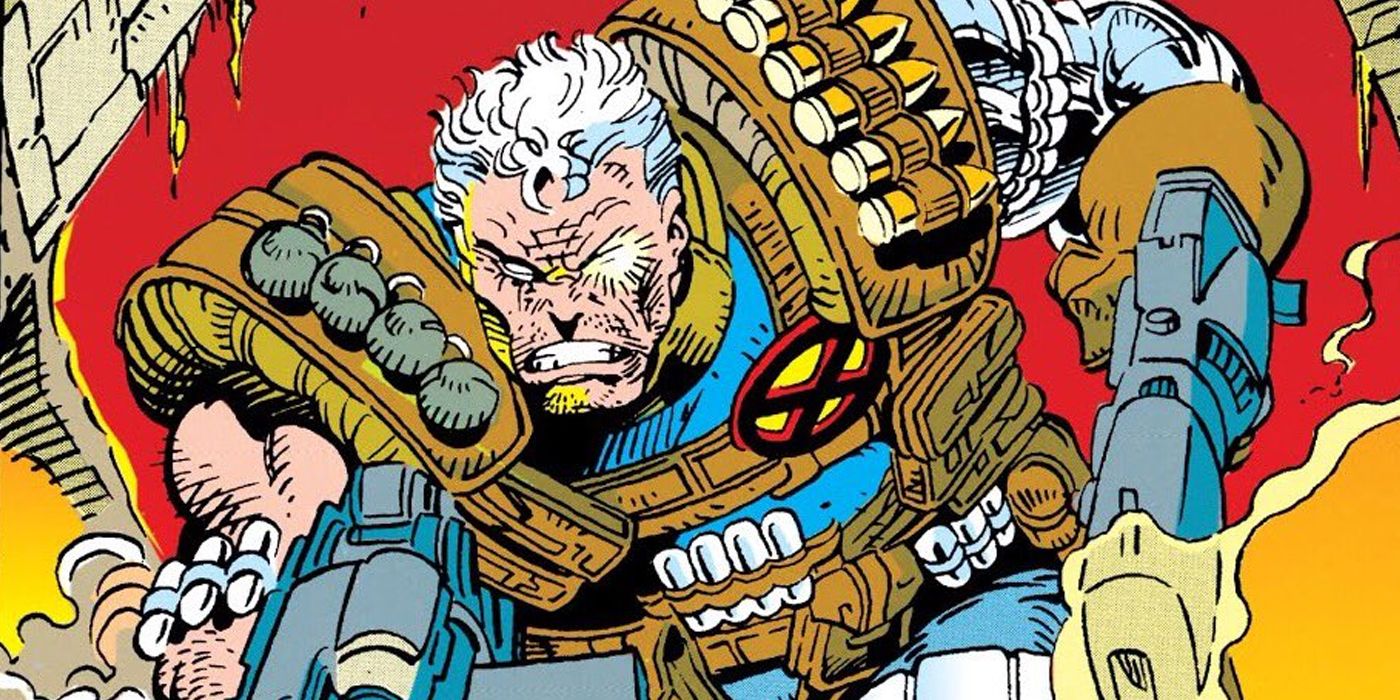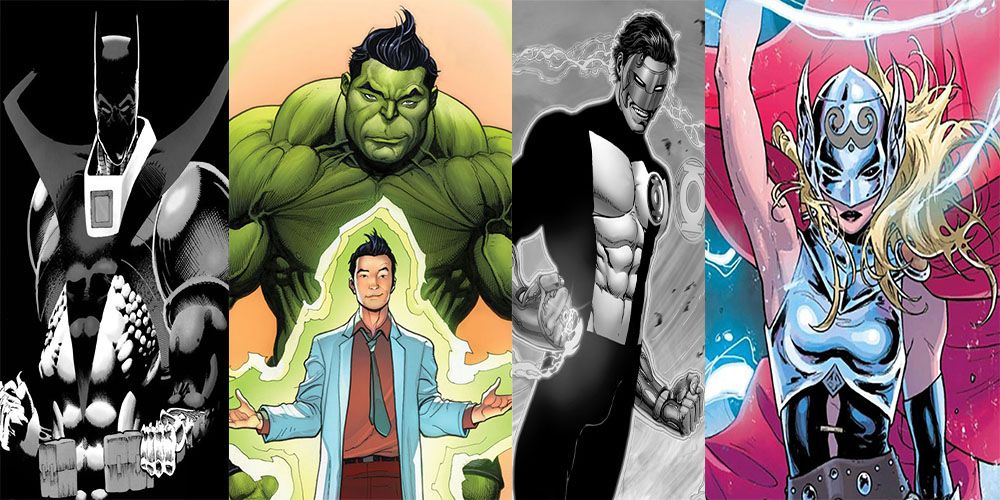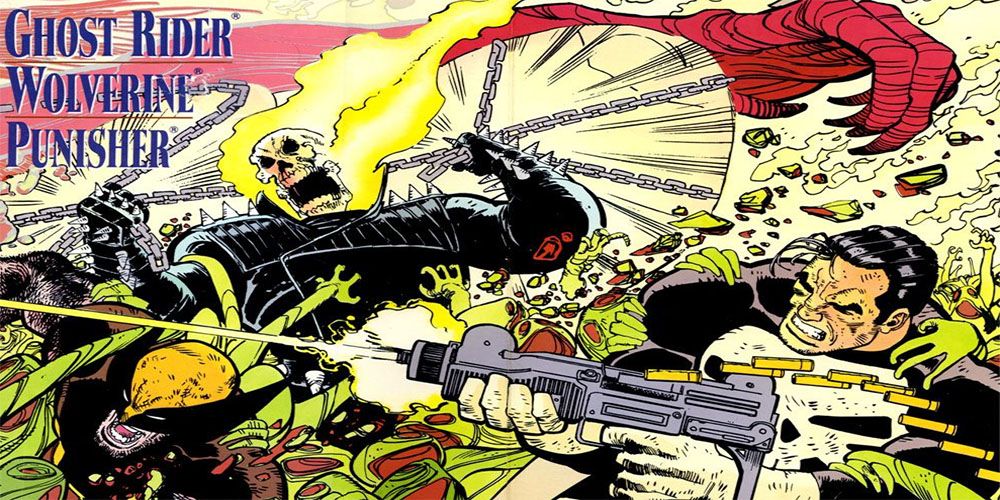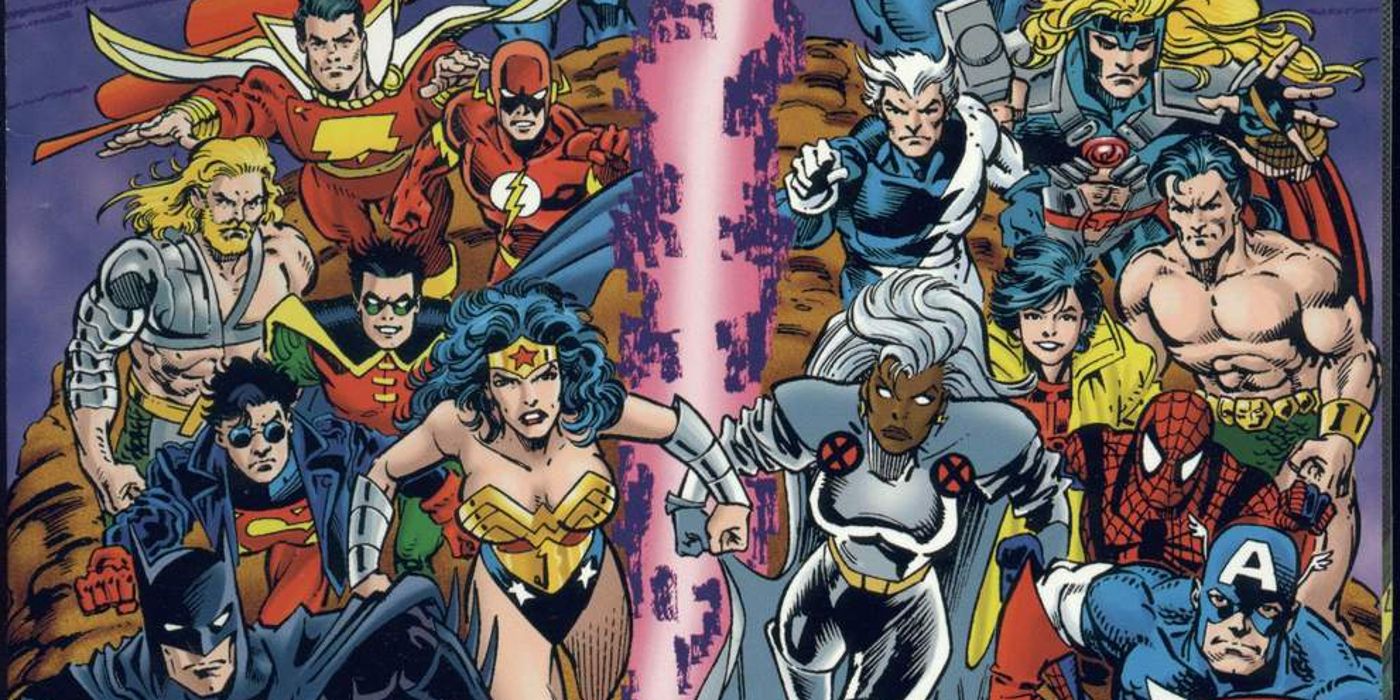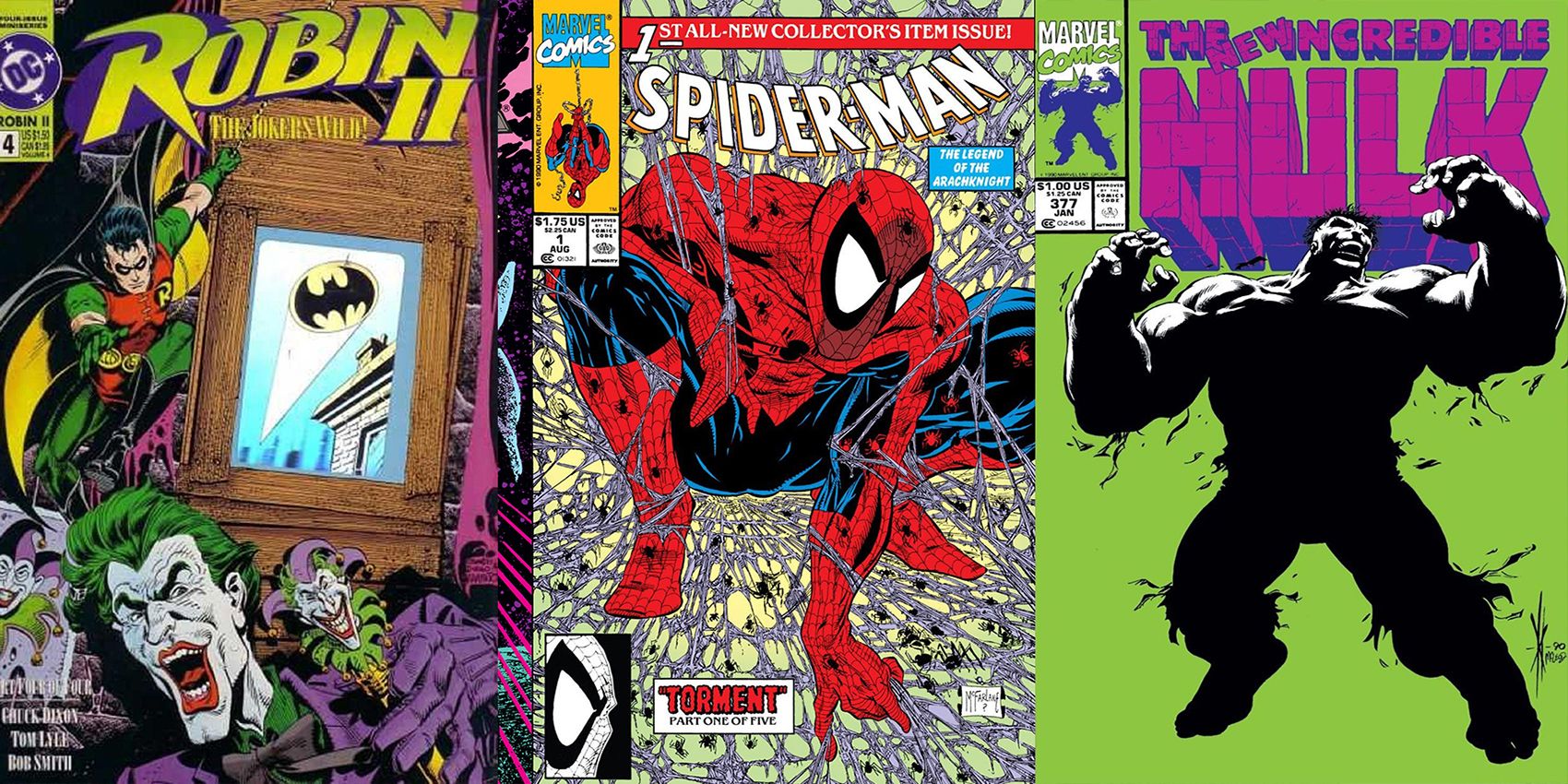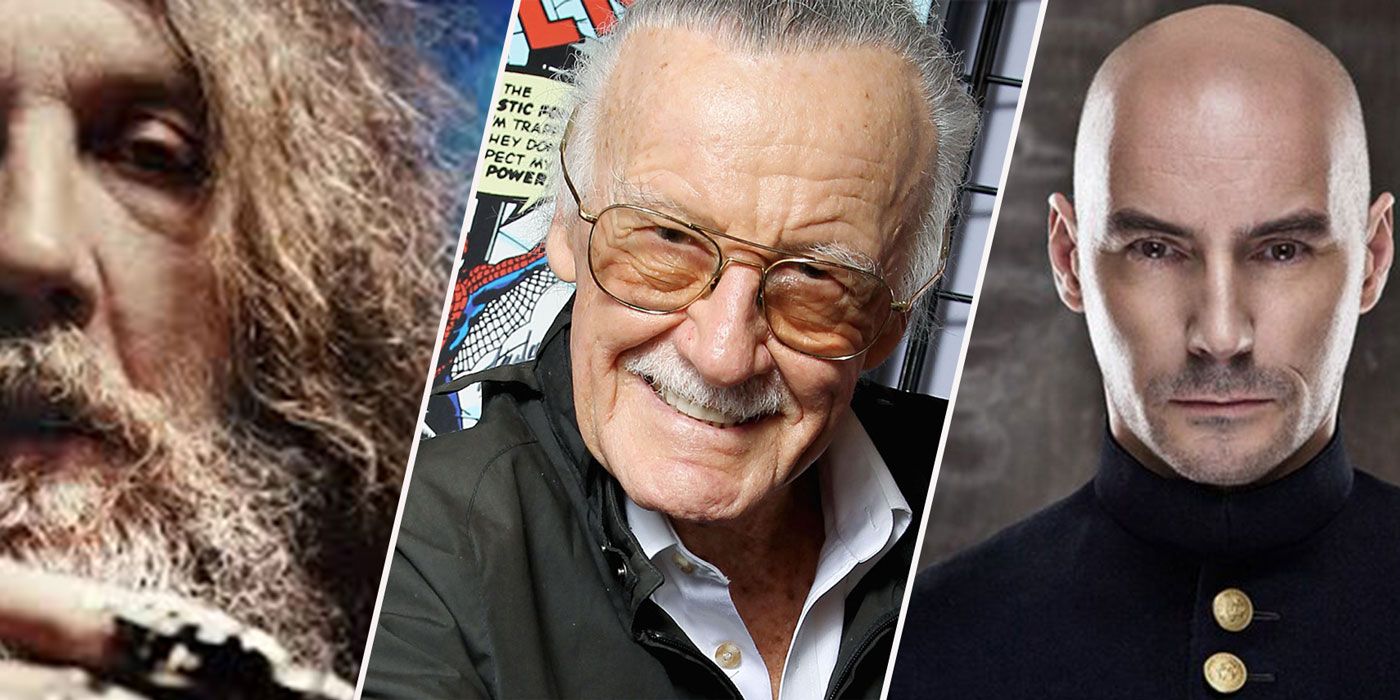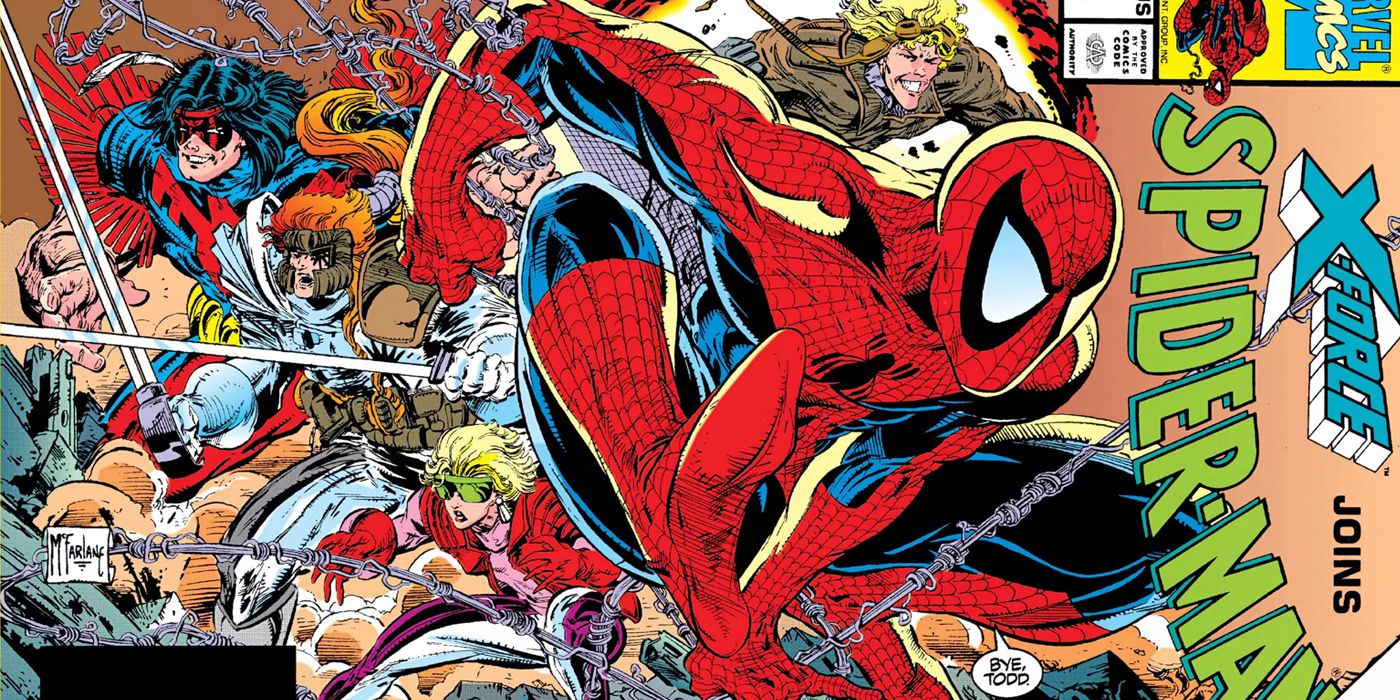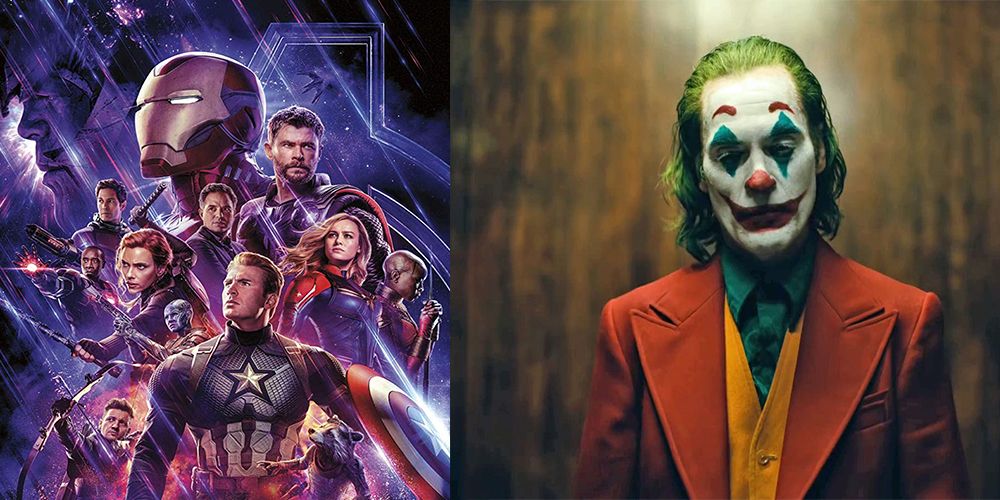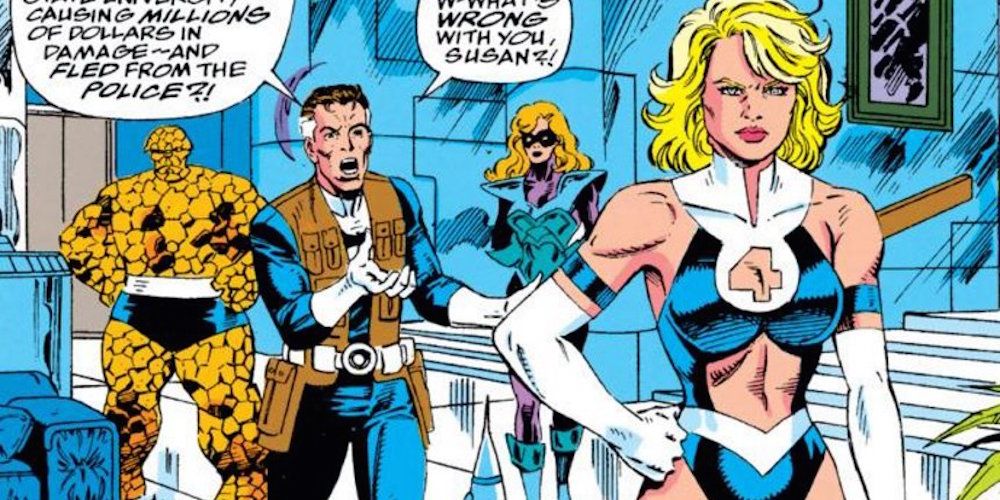The ‘90s are looked upon divisively by comic book fans. While some look back fondly on the era in which they first discovered and fell in love with the medium, others remember the gimmick covers, excessive guns and pouches, and grim n’ gritty antiheroes and wince. That some look at the era as the Halcyon Days and others call it a Dark Age stands testament to its importance either way, and as with all hotly contested issues, its influence cannot be ignored. With that in mind, here are 5 Trends Of 90s Comics That Died Out ( & 5 That Endured).
10 DIED OUT: Guns and Guns and Pouches and Guns
In a world where people have heat vision and can command lightning with magic hammers, arming yourself with guns seems highly anachronistic. Of course, if you’re a street-level non-super-powered vigilante like the Punisher, it makes perfect sense to be packing, but the ‘90s seemed rife with characters who were armed with every conceivable firearm known to man regardless of their powers set. Hand-in-hand with the guns were the pouches and bandoliers that contained their ammo, but the sheer amount of pouches some characters sported were ludicrous. Aside from being cumbersome, the contents of these pouches were anybody’s guess (gas pellets? grappling line? reading glasses? spare change?) and happily, most characters these days sport a streamlined look.
9 ENDURED: The Replacements
In a trend that started with the Death of Superman and spread to Batman, Green Lantern and Spider-Man, replacing classic heroes with “grim n’ gritty” or “extreme” substitutes was all the rage in the ‘90s. This trend has not disappeared in the modern age, as Batman (again), Wolverine, Thor, Iron Man, and the Hulk have all been replaced at some point or other by younger substitutes.
The difference these days is that their replacements seem to fit better in their roles in terms of thematics and story-telling, as opposed to the pure sensationalism and shock value the ‘90s replacements sought to exploit. In being replaced by daughters, protégés and former lovers, modern superhero stand-ins just felt more appropriate and ‘right.’
8 DIED OUT: Grim N’ Gritty
In truth, the whole “grim n’ gritty” trend in comics started in the late ‘80s with The Dark Knight Returns and Watchmen. However, presenting heroes as hard-boiled, violent, quasi-sociopaths really flowered in the ‘90s, partly due to these two series' influence and partly due to the sensibilities of the time. Writers in the ‘90s seemed to want to step away from the wholesome, “goody-goody” image of the Silver Age and dive into morally ambiguous territory with characters who were more psychologically complex and unafraid of crossing ethical lines. Thankfully, the proliferation of gun-toting psychopaths willing to splatter blood in the name of “good” has since diminished, as today’s writers are more willing to incorporate Silver Age concepts in today’s comics.
7 ENDURED: “Event” Crossovers
Crossovers have been a mainstay in comics since Superman, Batman, and Robin first straddled a naval gun. The ‘80s saw some experiments in line-wide, Earth-shattering epic events like Secret Wars and Crisis on Infinite Earths, but the “yearly company event” or “character event” really came into its own in the ‘90s, and has remained a popular vehicle for story-telling to this day.
Initially consigned to Annuals or the occasional 3-part crossover with another title, the ‘90s graduated into full-fledged title crossovers like Operation Galactic Storm, character or “family” crossovers like Knightfall and company-wide crossovers like Zero Hour or the Onslaught Saga. It’s hard to imagine a Final Crisis, Civil War or even a Death or Wolverine without the ‘90s crossovers paving the way for them.
6 DIED OUT: Gimmick Covers
Perhaps the most recognizable feature of the comic book industry in the ‘90s were the covers of the books. Adorned with every bell and whistle from foil-embossed to holographic to bagged with a trading card inside, comic books of the ‘90s tried as best as possible to catch your attention and your hard-earned dollar.
Although enhanced covers still pop up from time to time in contemporary titles, it is not with the same frequency as in the ‘90s, so a comic book fan can stare at a modern-day comic book rack without needing sunglasses and a Dramamine.
5 ENDURED: Creator-Driven Properties
Although independent comic book companies have always existed, they historically had nowhere near the popularity, scope, and reach of Marvel and DC. That all changed in 1992 when a group of former Marvel artists got together to form Image Comics. Suddenly, creators had an outlet to explore their own ideas in the medium while receiving their fair share of the profits, as evident by creations like Spawn, Savage Dragon and Astro City.
Creator-driven projects gained more popularity, and DC and Marvel seemed more willing to allow creators more latitude with interpreting their characters or creating their own worlds under imprints like Vertigo and Marvel Knights. Although Marvel and DC are still the top dogs, today, creators are given way more credit, creative opportunities, and latitude in their projects than ever before, thanks to the popularity of creator-driven properties of the ‘90s.
4 DIED OUT: Art Over Story
Artists were insanely hot commodities in the ‘90s, so much so that a book would often sell better depending on who the artist was. Unfortunately, better art does not necessarily make better stories, and as the art became more central to selling books, story began to take a backslide. Exhibit A would be Todd McFarlane’s run as artist and writer on Spider-Man, which sold well due to his breathtaking visual interpretation of the web-slinger but left a lot to be desired in terms of dialogue and accurate portrayal of the character and his world. Thankfully, contemporary comics seek to establish an equilibrium between story and art, and overall, the quality of writing has improved since the ‘90s.
3 ENDURED: Comic Book Films
Up until the ‘90s, the only really successful comic book films were the Christopher Reeve Superman movies and Tim Burton’s Batman. Aside from continuing the Batman series, the '90s saw the film industry flirt with the idea of mining comic books for movie ideas with hits like The Crow, The Mask, and Blade. Of course, a fair share of bombs and stinkers (like Tank Girl, Steel, and The Shadow) kept Hollywood from fully exploring the medium, until the success of 2000’s X-Men opened the floodgates.
Now, comic book films routinely hit the highest-grossing-film-of-the-year mark, and are released to packed audiences three or four times a year.
2 DIED OUT: Over-Sexualized Depictions of Women
Superhero comics have traditionally been a male-oriented industry, as a male-saturated writing and artistic pool crafted stories for preadolescent and teenage boys. Aside from a few notable exceptions, depictions of women seemed to follow traditional tropes, especially their visual depiction. In the ‘90s, almost every female hero or villain seemed to be drawn as an adolescent boys’ fantasy: fitness model body, heaving breasts, collagen-filled lips and hair that flowed in a non-existent wind. Although the depiction of women still has a ways to go in modern comics, current representations aren’t as blatantly over-sexualized as they once were.
1 ENDURED: The Trade Paperback
Younger fans may not remember this, but there used to be a time when if you missed an issue of your favorite title, you had to scour the back issue bins and newsstands around the city to find it.
With the rising demand for issues of popular series like Sandman reaching a fevered pitch in the ‘90s, the trade paperback became the easiest way for fans to read a complete story without having to waste their time or break their banks searching for single issues. To this day, trade paperbacks and collected editions remain a popular, cost-effective and simpler way to read a particular arc.

